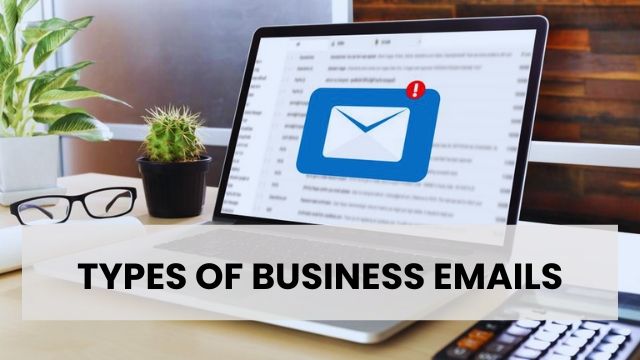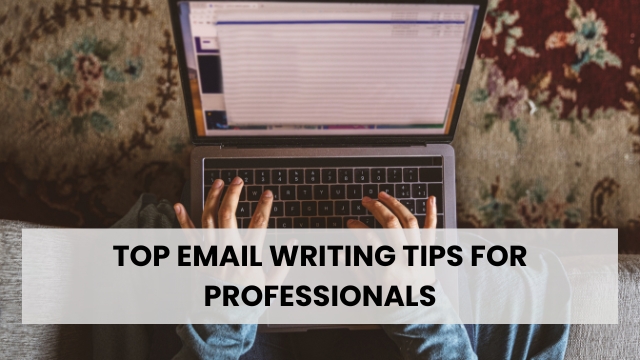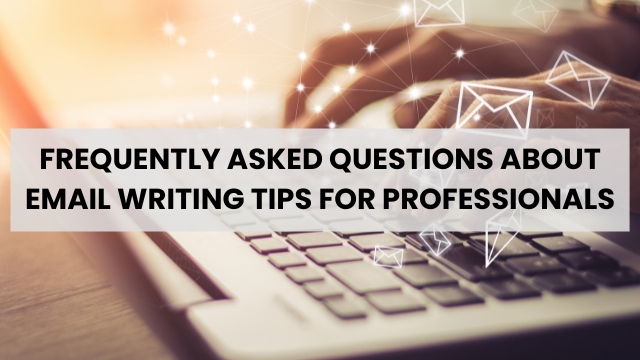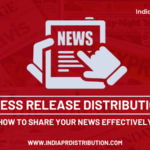Think back to the last time you composed a handwritten letter. Chances are, it’s been quite some time. The rise of electronic mail, commonly known as email, has made traditional mail nearly obsolete, especially in business communication. In today’s fast-paced professional world, knowing how to write an effective email is crucial. So, can you afford to miss out on these essential email writing tips for professionals?
Email has a long history, dating back to 1971 when Ray Tomlinson sent the first message between two computers over the ARPANET network. Since then, email has become a global phenomenon, used for both personal and professional communication. The days of waiting for letters in the mail are mostly behind us, except for a few formal documents. In this article, we’ll delve into various aspects of professional email writing, including:
- Types of business emails
- The proper format for writing a professional email
- Key email writing tips for professionals
Types of Business Emails

Understanding the types of business emails is the first step to mastering professional email communication. Here are the most common types:
1. Welcome Emails
Welcome emails are sent to new subscribers immediately after they join a company’s mailing list. These emails set the tone for future interactions and should reflect the company’s appreciation for the new subscriber. A well-crafted welcome email often features vibrant images, memorable one-liners, and a warm message. Investing in a skilled content writer who understands professional email etiquette can make all the difference.
2. Newsletters
Newsletters serve as a periodic update on an organization’s activities. Unlike newspapers, which cover a broad range of topics, newsletters focus on specific subjects relevant to the organization’s audience. They are sent to regular customers, business partners, employees, and other stakeholders. While newsletters can be either printed or electronic, most companies now prefer the latter, sending them via email.
There are various types of email newsletters, including:
- Reported newsletters
- Curated newsletters
- Visual newsletters
- User-generated newsletters
- Holiday/seasonal newsletters
- Event/invitational newsletters
- Hybrid newsletters
A well-designed newsletter, guided by email writing best practices, can effectively communicate an organization’s message to its audience.
3. Offer-related Emails
These emails are perfect for grabbing the attention of potential and existing customers by highlighting discounts, special offers, or free gifts. Offer emails typically have high open rates and conversion rates, making them a valuable tool for any business. Even small discounts or modest gifts can attract customers and keep them engaged.
4. Survey Emails
Surveys help companies gather feedback on products, services, or other topics of interest. Well-designed survey emails can yield valuable insights, allowing businesses to better understand customer preferences and market trends. To increase participation, keep surveys concise, clearly state the time required to complete them, and offer incentives like discount coupons.
5. Promotional Emails
Promotional emails are designed to inform readers about ongoing promotions. They might include special deals, product launches, or contests. While they are highly effective in driving sales and boosting brand awareness, the content and design should be tailored to the specific promotion and target audience. For instance, the tone of a promotional email might differ for new customers versus existing ones.
Top Email Writing Tips for Professionals

To craft effective business emails, keep these tips in mind:
1. Craft a Compelling Subject Line
The subject line is the first thing your recipient will see, so it needs to be compelling. It should offer a clear idea of what the email contains. A vague or poorly worded subject line, like “Open this mail to find out what’s new,” won’t entice readers to click. Instead, opt for something specific like “Check Out Our New Fall Collection.”
In addition to clarity, your subject line should be catchy to stand out in a crowded inbox. Use wit, pose a question, or create a sense of urgency, but avoid words like “free,” “buy,” and “cash bonus” to steer clear of spam filters. Remember, most people read emails on their smartphones, so keep your subject line short—ideally five to seven words.
2. Use the Right Greeting
Addressing your recipient correctly sets a professional tone. Use their name if you know it, such as “Dear Mrs. Smith.” If you’re unsure of their name or gender, opt for a generic title like “Dear Customer” or “Dear Reader.” Personalizing the greeting makes the recipient feel more valued and engaged.
3. Prioritize Clarity
In today’s fast-paced world, no one has time to wade through lengthy emails. Be concise and straightforward. Stick to the main point and avoid unnecessary information. Use simple, clear language that your reader can easily understand, ensuring there’s no ambiguity about the purpose of your email.
4. Maintain a Professional Tone
Always use a polite and respectful tone. Avoid using emojis, smiley faces, or informal language, which can undermine your professionalism. In business communication, it’s better to be slightly more formal than too casual, as this shows respect for the recipient.
5. Focus on the Recipient’s Needs
Make the email about the recipient, not about you. For example, instead of saying, “Help us become the leading supplier of office goods,” say, “Let us take care of all your office supply needs.” Similarly, when promoting a product, emphasize how it benefits the customer rather than listing technical specifications. If needed, include a link to detailed information instead of cramming it into the email body.
6. Use Visuals Wisely
A few relevant images can make your email more engaging. However, too many images can distract from the message. Use visuals sparingly and ensure they complement the text rather than overpower it.
7. Incorporate Humor Carefully
A touch of humor can make your email more relatable and memorable, but use it cautiously. Avoid controversial or sensitive topics, and stick to light, inoffensive humor that aligns with your brand’s tone.
8. Include a Clear Call to Action (CTA)
A strong CTA is crucial in guiding the recipient towards the desired action, whether it’s making a purchase, signing up for a webinar, or reading a blog post. Place the CTA near the end of your email, and make it stand out with a button or link.
9. Show Gratitude
Always thank the recipient for their time, even if they’re just reading your email. A simple thank-you note at the end can leave a positive impression and reinforce that you value their attention.
10. End with a Professional Sign-off
Close your email with a respectful sign-off, such as “Best regards” or “Thank you,” followed by your name. An automatic signature with your contact details and company information can be a helpful addition.
11. Provide Contact Information
Including your phone number, office address, and other contact details can make it easier for the recipient to reach out. It also conveys a sense of openness and accessibility.
12. Proofread Your Email
Finally, always proofread your email to catch any spelling or grammatical errors. An email riddled with mistakes can come across as unprofessional and careless, which can harm your credibility.
Conclusion
These professional email writing tips are essential for effective business communication in the digital age. Your emails often serve as the first impression for many clients and partners, making it crucial to convey professionalism, clarity, and courtesy. With the right approach, emails can be an incredibly effective tool for building relationships and driving business success.
Emails combine the formality of traditional letters with the convenience of digital communication, making them a powerful medium for professional correspondence. By mastering these tips, you can elevate your email writing skills and make a lasting impression on your audience. Hopefully, this guide will serve as a valuable resource in your journey to becoming a proficient email communicator.
Frequently Asked Questions About Email Writing Tips for Professionals

Q1. Is email marketing effective for business growth?
A: Yes, email marketing remains one of the most effective strategies for business growth. Research shows that it often yields better results than social media marketing, offering high returns on investment.
Q2. Are there any tools for improving email writing?
A2: Yes, several tools can help you write better emails, such as:
- Hemingway Editor: For clear and concise writing.
- Grammarly: For grammar and spell-checking.
- Just Not Sorry: For avoiding weak language.
- HubSpot Email Templates Builder: For creating professional templates.
- Detective by Charlie: For personalized greetings.
- Crystal: For understanding the recipient’s personality.
- Mailchimp: For managing email marketing campaigns.
Q3. How frequently should I send marketing emails?
A3: The ideal frequency varies depending on your audience and industry. A general guideline is to send emails once a month to avoid overwhelming recipients, but this can be adjusted based on your specific needs and customer preferences.
Q4. When is the best time to send marketing emails?
A4: While preferences vary, many people check their emails during weekends and early mornings. It’s best to test different times and analyze your open rates to find what works best for your audience.
Author Profile

- Nitin Jain - C.E.O - India PR Distribution
- Nitin Jain is the founder and C.E.O of India PR Distribution - India's top Press Release Distribution and PR Agency. Nitin has more than 20 years of experience in PR, Corporate Communications, Digital Marketing, Branding Strategy and Lead generation.
Latest entries
 EntrepreneursJanuary 5, 2026Nitin Jain Entrepreneur Behind India PR Distribution Success
EntrepreneursJanuary 5, 2026Nitin Jain Entrepreneur Behind India PR Distribution Success Press releaseNovember 20, 2025Meet Nitin Jain: CEO of India PR Distribution
Press releaseNovember 20, 2025Meet Nitin Jain: CEO of India PR Distribution Search OptimizationSeptember 16, 2025What Is Digital PR and Why It Matters for SEO Success
Search OptimizationSeptember 16, 2025What Is Digital PR and Why It Matters for SEO Success Press releaseAugust 14, 2025Press Release Distribution: How to Share Your News Effectively
Press releaseAugust 14, 2025Press Release Distribution: How to Share Your News Effectively

